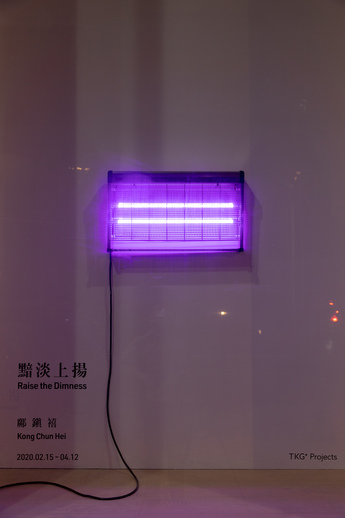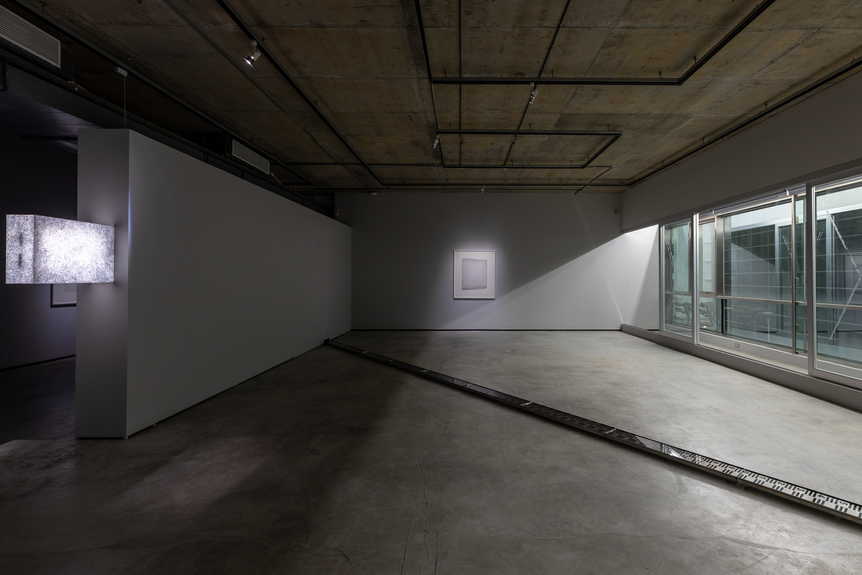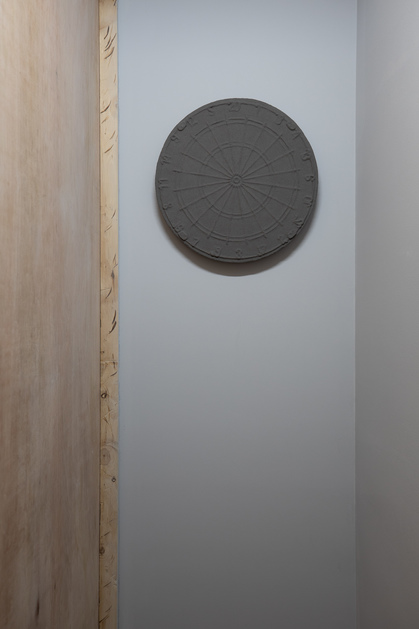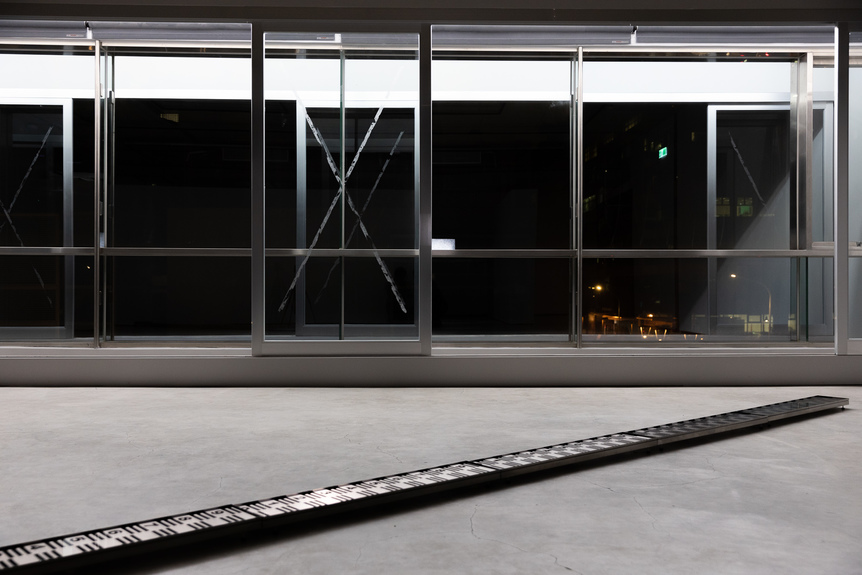-
From Current Issue
-
- Editor’s Letter Fire in the Heart
- Reviews I Gusti Ayu Kadek Murniasih
- Reviews 11th Seoul Mediacity Biennale: “One Escape at a Time”
- Dispatch Networked China
- One on One Monira Al Qadiri on Yukio Mishima
- Essays The rise of independent art spaces in pandemic-era Shanghai
- Features Tuan Andrew Nguyen
- Table of Contents
- Web Exclusives
- Archive
- Subscribe

R
E
V N
E
X
T
Installation view of KONG CHUN HEI’s solo exhibition “Raise the Dimness,” at TKG+, Taipei, 2020. All images courtesy the artist and TKG+.
Installation artist and sculptor Kong Chun Hei examines everyday objects and their essences through his reconstructions. Born in Hong Kong in 1987, and a 2009 graduate from the department of fine arts at Chinese University of Hong Kong, Kong’s mixed-media artworks, ranging from glass to dart boards and mosquito killers, address the paradoxical states of existence. ArtAsiaPacific’s associate publisher Charles Wong met the artist on the occasion of his first solo exhibition at Taipei’s TKG+ gallery, “Raise the Dimness,” during which Kong gave a tour of the show, and discussed his works as well as his creative process.
My current exhibition is titled “Raise the Dimness.” Dimness does not equate to complete darkness, but rather points to an aroused, chaotic state. My creations have been similar in recent years, and also some of the works on display here are reiterations of older works. I consider the original elements of each object before re-arranging or replacing them with an element of my own, making the object paradoxical in its own existence.
Immediately on view behind the gallery windows is a light installation Be free from your burden of luscious color (2017), which is an insect killer with alternating colors. I changed its original ultraviolet light to a LED light with five different colors. My initial thought was: why does it have only one color? Although in theory that specific color attracts bugs, I wanted to change the insect-killing color to a vibrant fluorescent color. This creates a contrast with the exhibition title, “Raise the Dimness,” which is also on the window.
Upon entering the gallery, visitors will encounter an installation along the staircase armrest. I didn’t title the work as it is more like a part of the setting. When I was reviewing the exhibition space on the second floor with the TKG+ staff, I tried to imagine what visitors would see before they enter, which is the staircase. I thought that the metal armrest could help connect both floors, but I didn’t want to hang anything there, so I added a speaker to the armrest. The vibration is passed on from the first floor to the second floor, and although the device is quite light, it adds a layer of intensity, creating a sense of irritation. In this way, the vibration and sound waves become intangible experiences within the space.
Installation view of KONG CHUN HEI’s Non-stop Stop, 2019, single-channel black and white silent video: 4 min 33 sec, at “Raise the Dimness,” TKG+, Taipei, 2020.
The video work of clapping hands Non-stop Stop (2019) at the entrance was made because I wanted to record myself incapable of clapping. For this show, I felt that I should applaud myself, but I stopped before my hands touched each other, just like how I would often try to encourage myself but then find it difficult to do so.
A long linear piece, Flooding (2019), is comprised of 19 pieces of stainless-steel staff gauges. Instead of being vertically nailed onto a wall as you would expect, they are placed on the floor, cutting the space diagonally. I modified them into thin containers, allowing them to hold water up to about 1 cm tall. The gauges, originally designed to measure water, has been transformed into a vessel. Although the amount of liquid being held is minute, the apparatus, which can no longer be utilized for its intended purpose, is in a disastrous “drowned” state. Yet, on the floor of a dimly lit section of the gallery, viewers are only able to see the water by catching rays of light reflected from other works.
For Signature Drawing II (2020), I signed my name repetitively on the light box. The lightbox ads on the streets are usually printed with names of shops and brands, or with clear details of their services. Meanwhile, signatures are commonly used as a method of confirmation, such as when you have to sign an official document, or when you are withdrawing money from the bank. With my signature repeated on the light box, visually it changes from something straightforward to something less so, where the meaning and purpose of the object becomes more obscure.
Standoff (2019), another mystifying work, is made of darts and a dartboard. I used about 100 darts, reduced their metal parts into powder, added in some matte medium normally used in acrylic paintings, and subsequently covered the whole dartboard with this mixture. I nailed the remaining parts of the darts on the gallery wall, and hung the dartboard behind this wall at the end of a narrow tunnel. For me, this means hitting the target, only that the darts are not stuck on the board but covering it, or even occupying it.
The glass sculpture, The Sliding Myth (2020), is similar to It’s a myth (2017), previously shown at Hong Kong’s Gallery Exit in 2017. In my city, after a typhoon, it is common to see remnants of an “X” left by tape on glass panels of windows or doors. The tape protects the glass from shattering during strong winds, but by carving along the traces, I was damaging it, however minor my actions may be. In the exhibition, this glass work is installed as a sliding door. Originally the gallery had a large window, but I didn’t want to cover it with curtains, so instead I incorporated this element into my work. In fact, the arrangement of a lot of pieces in this show was designed in accordance to the space.
I think a lot of artists continuously explore the same themes, even though the form or medium may vary. For myself, my thoughts and mode of thinking have remained the same with regards to my perception of objects, my understanding of their components and composition, and how to transform them into a chaotic state. I transfer this way of thinking onto objects that interest me, or, I consider the placement of the artwork within the space. Oftentimes I think more about the space itself. For example, how a painting is viewed and the effects it has is drastically different when hung at different angles.
Oftentimes when I am creating something, the idea would suddenly appear to me, like when I am watching the news or something happening in society. I think it’s not necessary to portray this directly with a specific symbol, but rather I allow the information to settle in my mind, and after further contemplation the image of the work materializes.
In reality, when contemporary artists add political elements to their works, they become more readily accepted, as if they are deemed more “correct” as an artist. After the Umbrella Movement in 2014, many Hong Kong artists have discussed the sense of helplessness and possibilities for healing. They, and their audience, become excited about the political symbolism in the works, which is actually an excess to the work itself as oftentimes people project their own values onto things. I think this generates overexpectation, and while this may be related to misinterpretations from the audience, I don’t think art needs to compensate for this gap. Issues do not always need to connect with external forces to come to a resolution, as the original elements or conditions within may already be sufficient.
In this sense, my work is much more restrained; it does not contain symbols that need to connect with the external world in order to be analyzed. An internal conflict is created on the basic operation of things, and my replacement or offset such as changing the function of the water gauges from measuring a flood to containing it, maintaining the objective of darts in terms of hitting the target but altering how this is achieved, and permanently carving traces of protective tape left on glass. For me, I am considering how to create chaos while maintaining the inclination of an object, forming works that are contained within themselves.
Charles Wong is ArtAsiaPacific’s associate publisher; Pamela Wong is assistant editor.
Kong Chun Hei’s “Raise the Dimness” is on view at TKG+, Taipei, until April 12, 2019.
To read more of ArtAsiaPacific’s articles, visit our Digital Library.





















